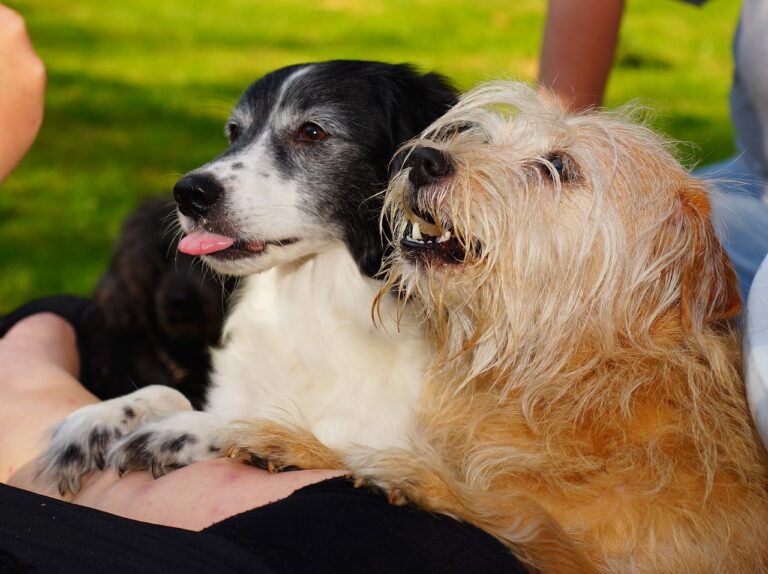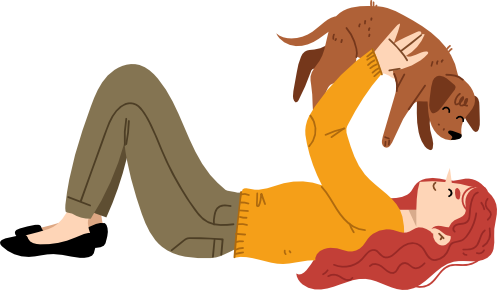There is a common misconception that if you use treats to train your dog, that you are just using bribery.
Or, that your dog will ONLY do what is asked of them if there is food present.
Or, that your dog will begin to beg for food all the time if you use food, particularly “human” food, for training. (Hint, “human” food is simply “food” to your dog).
Let’s face it, most people prefer to have a dog behave politely around the dinner table. I know I do.
But guess what? I use treats (even “human” food) when I train, and my dog doesn’t beg for food. She also listens when I ask her to do something, even if there’s no food in sight.
The myth that food is bribery is based on a concept (albeit, the false concept) that your dog should do what is asked of them because they love and respect you.
Let’s take a look at how treats can actually benefit your training. Treats are not bribery when they are used correctly to reward desired behaviours (the things we would like our dogs to do). Using food as a reward is actually based on the fact of how animals (all animals, and yes, ALL dog breeds) learn by way of a reward system.
The Truth: Your Dog’s Brain on Treats
There was once a time when people believed that using coercion and force were effective training tools. This thinking is still popular today in some circles, but things are changing.
We now know, thanks to science, that these techniques are not only less effective than positive (reward-based) training, but they can create new problems such as fear and anxiety leading to aggressive behaviour (Blackwell et al., 2009; Herron et al., 2008; Ziv, 2017).
The truth is, treats are important for not only teaching your dog something new but for changing your dog’s opinion about scary situations. Food actually affects your dog’s brain chemistry (Berns et al., 2013). Food increases dopamine – a chemical in the brain that increases motivation.
How Dogs Learn
You may have heard of the term “positive” or “reward-based” training. These terms are used by industry professionals who understand the mechanics of how an animal learns through the use of motivation via a reward system.
When an animal is rewarded for sitting or for remaining with four paws on the floor when you come home rather than jumping, they are more willing to do that behaviour again. They learn to do so through trial and error.
Sitting = treat. Not sitting = no treat.
The more the behaviour is rewarded, the more inclined they are to do the behaviour when they are asked to do so. Simple, right?
Working For Pay. What is Motivation?
Think about it this way. Your boss calls you to do a job on the weekend. But here’s the catch. She says “you should want to do the work out of respect for me.” What would you do (or at least, how would you feel)?
Now think about value. Your boss provides you with praise at the end of the day.
Is that good enough? Would you ever work a weekend again? How about for half of your normal pay rate? Keep in mind, this is your day off! Would you do it for full pay? Maybe. But would you be more inclined to do it, and maybe even offer to do it again, if you were offered time and a half or more?
Some people argue that using food rewards is unnatural – a mother wolf doesn’t use treats to reward her puppies, after all. In fact, training your dog with food rewards (treats) is actually more effective than using praise and petting for both dogs and wolves (Feuerbacher and Wynne, 2012).
Value of the reward is important. Food is valuable to your dog. Even the type of food offered will vary in worth. Does your dog prefer cheese over kibble? My guess is cheese trumps kibble any day!
How To Avoid Bribery: Using Treats Correctly in Training
Remember, treats are a reward. A reward is something that happens after your dog provides the desired behaviour.
The idea is to teach your dog that they want to do what is being asked of them, rather than coerce them into it. The more we reward it, the more they want to perform the same behaviour again.
Bribes, on the other hand, are offered before the dog has done anything. This improper technique is what can create a scenario where a dog may only do what’s asked of them when food is present. Not only is bribery ineffective, it creates all sorts of training problems!
If you have used treats properly in your training, you should be able to eventually fade treats out completely, or just occasionally use a food reward once the behaviour is fluent (once they can perform with ease and accuracy no matter the situation).
Having said that, adjust your treat value accordingly. If the behaviour you are teaching is new, or the environment makes it more difficult due to distractions, up the value to match the training situation.
Most trainers fade out treats by transitioning the dog to a “variable reinforcement schedule,” where the dog still gets “paid” for her work in many circumstances. Trainers are also adept at using non-food rewards later on, like rewarding their dogs with play or freedom. You can do the same!
Do Dog Treats Make Dogs Beg?
Can treats lead to begging? In truth, treats can actually be used to prevent or change this behaviour when applied correctly.
Check out how to prevent and fix begging in this video by Journey’s head trainer, Kayla.
If, however, you feed your dog off of your plate while you’re eating supper every day, consider what behaviour is being rewarded. Sitting at your feet and waiting for a handout (i.e. “begging”)?
It actually has nothing to do with the fact that you used chicken two hours earlier in a training session.
Think of this, if every time you go to visit Grandma, she has made you her delicious homemade cookies, you might really enjoy visiting her, and even visit more frequently. But the fact that you associate visiting Grandma (the behaviour) with potentially getting cookies (the reward) has NOTHING to do with the birthday cake you had earlier for a coworker in the office lunchroom!
“My Dog Should Want to Please Me”
A frequent concern I hear is, “I want my dog to respect me, and not just perform for treats.”
Is there any merit to this? No.
Dogs do not do what they do simply out of love for you, or alternatively, because they disrespect you. There is a misconception out there that loyalty and obedience are connected. They are not. Obedience (the skills we teach our dogs) is actually learned.
And these behaviours can be learned effectively by being reinforced. And an effective reinforcement is food.
Training with food actually strengthens the bond we have with our dog. It can actually help build loyalty!
Think about what I said earlier about motivation. Motivation is what drives us all to succeed, to learn, and to behave the way we do.
The motivation for your dog, at least a good part of what motivates them, is food. And sometimes human food (chicken, hot dogs, cheese), is just a lot more motivating than boring old kibble.
Go Ahead, Use Treats.
Treats are the ideal reward for training. They can be used to reward good behaviour and they can be used to modify the response of a fearful or anxious dog. Dogs innately value food and most dogs are motivated by food. If your dog often turns up her nose at treats, there are a few things that could be happening, such as stress or even being full.
Treats are also easy to deliver, making the reward time quick and efficient. This translates to better training results.
So, forget the idea that treats will cause unwanted behaviours like begging, and know that they actually can help your dog learn all those desired behaviours without the use of fear or intimidation.
So, fill your treat pouches and get training!
References
Berns, G. S., Brooks, A., & Spivak, M. (2013). Replicability and heterogeneity of awake unrestrained canine fMRI responses. PloS one, 8(12), e81698.
Blackwell, E. J., Twells, C., Seawright, A., & Casey, R. A. (2008). The relationship between training methods and the occurrence of behavior problems, as reported by owners, in a population of domestic dogs. Journal of Veterinary Behavior: Clinical Applications and Research, 3(5), 207-217.
Feuerbacher, E. N., & Wynne, C. D. L. (2012). Relative Efficacy of Human Social Interaction and Food as Reinforcers for Domestic Dogs and Hand-Reared Wolves. Journal of the Experimental Analysis of Behavior, 98(1), 105-129.
Herron, M. E., Shofer, F. S., & Reisner, I. R. (2009). Survey of the use and outcome of confrontational and non-confrontational training methods in client-owned dogs showing undesired behaviors. Applied Animal Behaviour Science, 117(1-2), 47-54.
Ziv, Gal. (2017). The effects of using aversive training methods in dogs—A review. Journal of Veterinary Behavior, 19, 50-60.

